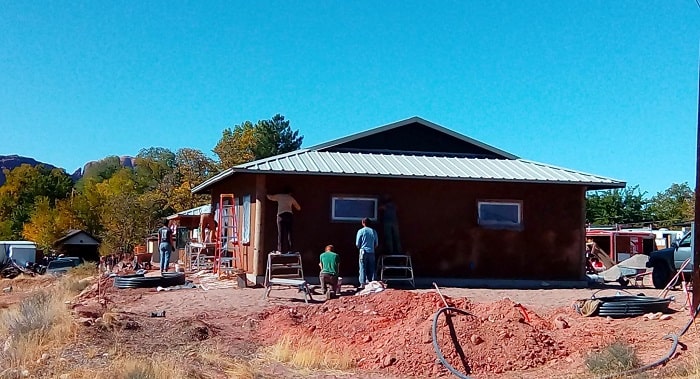
Moab & Housing
One might deduce that there is an affordable housing crisis when stories are circulated of working adults living with their parents, camped out on public lands and in the yards of friends and co-workers; house-sharing; and business owners housing workers in Airstreams and single-wide trailers.
The US Department of Housing and Urban Development states that affordable housing is when a family spends less than 30% of their income on rent or a mortgage and other fees related to housing. A large portion of residents in Grand County, according to the Moab Area Housing Plan, spend more than 30% of their income on housing. The workforce of Moab consists of 55.80% tourism industry workers who earn an average of $27,744 annually, but the average cost of a home is currently $403,983.00 (2019 second quarter) making it next to impossible for the average resident in Moab to afford to buy.
What is the City of Moab doing about its affordable housing dilemma? There are currently three projects that the community in and around Moab are working on to assist Grand County’s low and middle-wage earners to find affordable places to live. The hope is to at least bring the count of affordable housing units to 400 or more by the year 2030.
Walnut Hill
The city of Moab is planning a proposed mixed-income rental development on Walnut Lane, which will construct around 80 units with affordable housing. These units will include between 300 – 900 square foot units ranging from studio apartments to three-bedroom apartments. Newly contracted Senior Projects Manager, Kaitlin Myers said, “Since the city purchased the property last year, one of the highest priorities has been to not displace any of the residents during the development process, so the primary challenge with this first phase is to identify the best place to start—to identify a “hole,” if you will, to build some higher density housing for the current residents to move into to make room for later phases on the site.”
When asked for an estimated guess of when construction would begin, City of Moab’s Communications and Engagement Manager said, “We don’t have a specific date for when design and construction will begin, but the goal is to get the first phase underway as soon as possible and to do so while maintaining our pledge to not displace the current residents.”
Arroyo Crossing
Arroyo Crossing is MACLT: Moab Area Community Land Trust, a 41-acre housing development consisting of three community facilities totaling 300 units will be built containing 1, 2 and 3-bedroom apartment units, single-family homes, duplex units, townhouses, and cottages.
According to the chair of MACLT, Audrey Graham, the number and type of units that the project will ultimately have will be determined as the development reaches its final stage. Graham said, “The project is going amazingly. We will put in the infrastructure in the coming year.” Graham further said there would most likely be about 20 single-family homes built in 2020 as well.
Graham explained that development was going to occur in stages and land may look like it’s not being developed, but advises that MACLT is being selective and will be looking for contractors and developers who develop sustainable housing. There will be homes for sale and for rent, but they will only be available to workers who live, work and have retired in Grand County and northern San Juan County.
Wingate Village
Construction is underway on the 33 total units by the Housing Authority of Southern Utah called Wingate Village, which will consist of 11 single-family units built under the housing authority’s Mutual Self Help (MSH) program, and there will also be 22 affordable townhome rentals.
Although the proposed units soon to be in development will put a dent in the current housing crisis in Moab, the Moab Area Housing Plan has projected the number of housing units at multiple pricing levels will increase to over 1,000 units by the year 2030.





